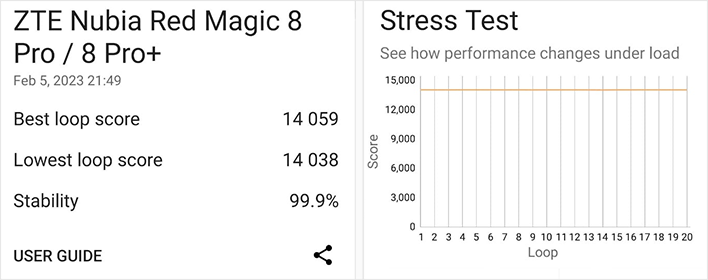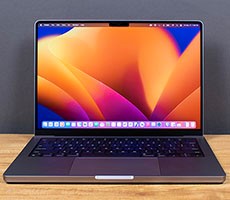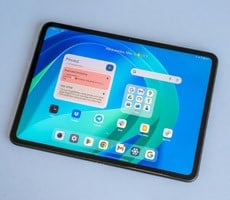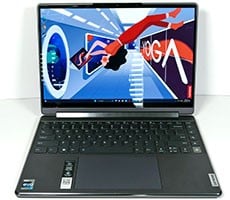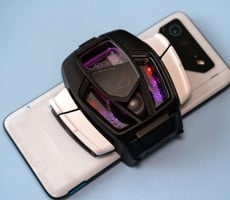RedMagic 8 Pro: Audio Quality, Platform And Graphics Performance, And Battery Life
RedMagic 8 Pro Audio, Data, and Call Reception
The RedMagic 8 Pro’s stereo speakers – located along the top and bottom edges – sound decent overall, but lose clarity at louder volumes. Regardless, most people will find these speakers perfectly acceptable. What’s more exciting is that the RedMagic 8 Pro features a headphone jack paired with a quality DAC and amp. It also supports aptX HD and LDAC for high-quality wireless audio via Bluetooth.
RedMagic 8 Pro Performance
In everyday use, the RedMagic 8 Pro feels incredibly quick, handling everything from basic productivity apps to graphically-intensive games like ARK: Survival Evolved and Shadowgun Legends without breaking a sweat. Despite the superb performance, I didn’t notice any significant difference in speed or smoothness compared to Samsung’s Galaxy S23 Ultra, which uses a binned Snapdragon 8 Gen 2 processor with slightly higher clock speeds.
While subjective performance only tells part of the story, our benchmark results (below) validated my observations. In most of my tests, this RedMagic gaming phone performed on par with Samsung’s flagship, showing only marginal improvements in certain areas. But, unlike the Galaxy S23 Ultra, the RedMagic 8 Pro didn’t show any significant throttling, no matter the state of the 20,000 rpm fan or choice of refresh rate.
RedMagic 8 Pro Geekbench Results

RedMagic 8 Pro PCMark For Android Benchmarks
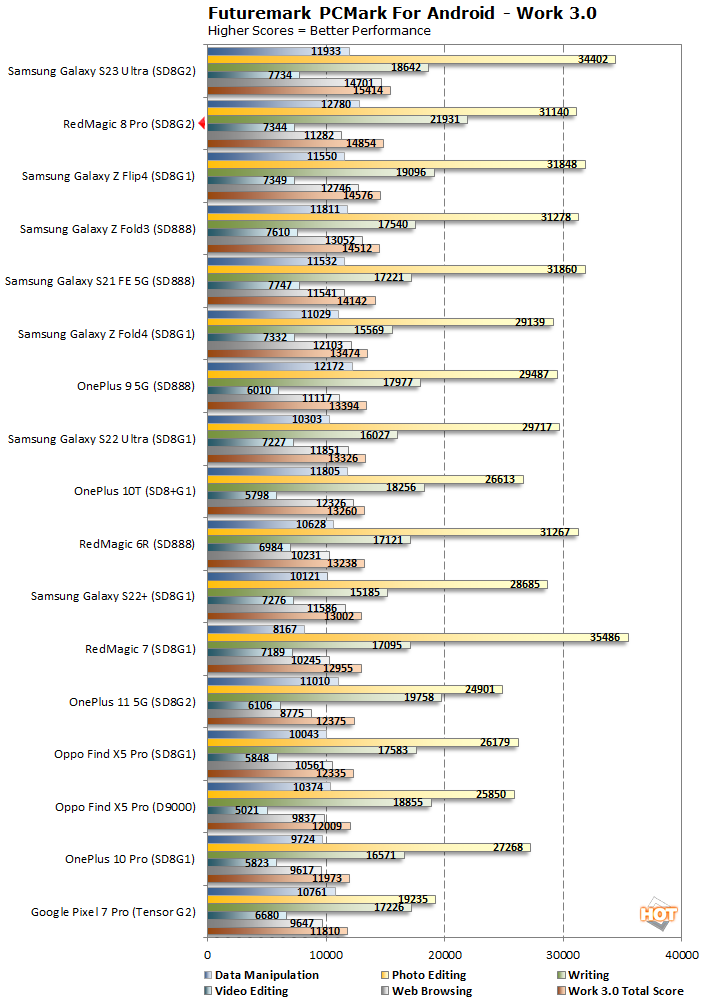
RedMagic 8 Pro AnTuTu 8 Benchmark Results


However, in AITuTu, which is specifically an image recognition and classification benchmark for AI and machine learning workloads, we see a different picture. Here we usually see big gains for Snapdragon 8 Gen 2-powered devices, but the RedMagic 8 Pro only matches Snapdragon 888-powered devices in our database. We've found this to be the case when some phones might not have the latest neural network models installed in the phone's firmware packages, so an update here from RedMagic could easily change this picture and bring its performance in-line with other Snapgradon 8 Gen 2-based devices.
3D Graphics And Gaming Benchmarks With The RedMagic 8 Pro
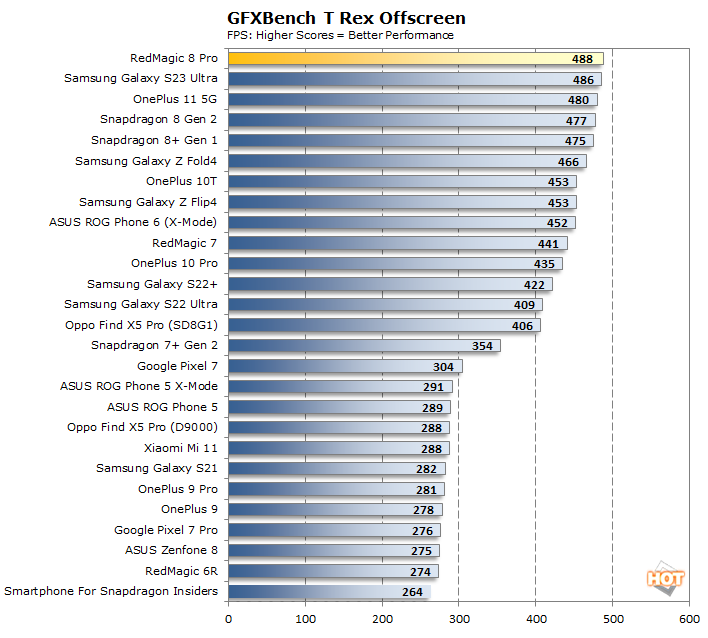

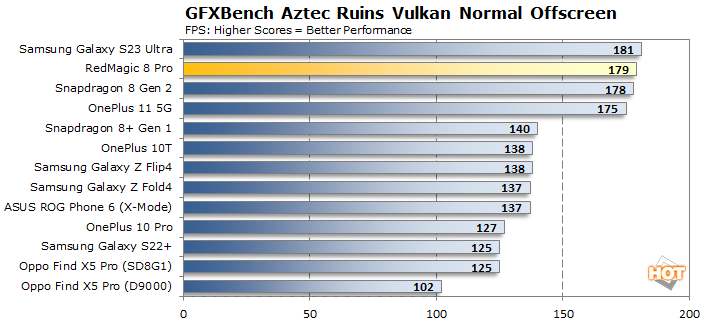
Futuremark's 3DMark Sling Shot is a newer benchmark module that's been added to the 3DMark mobile suite. Unlike previous gen 3DMark mobile tests, Sling Shot is a much more advanced OpenGL ES 3.1 and Metal API-based benchmark that employs more advanced rendering techniques, like volumetric lighting, particle illumination, multiple render targets, instanced rendering, uniform buffers and transform feedback.

3DMark Sling Shot Extreme Benchmark
We're running this test in off-screen mode once again to remove display resolution differences from the equation. This lets us compare cross-platform results more reliably...

RedMagic 8 Pro 3DMark Wild Life Benchmark Tests
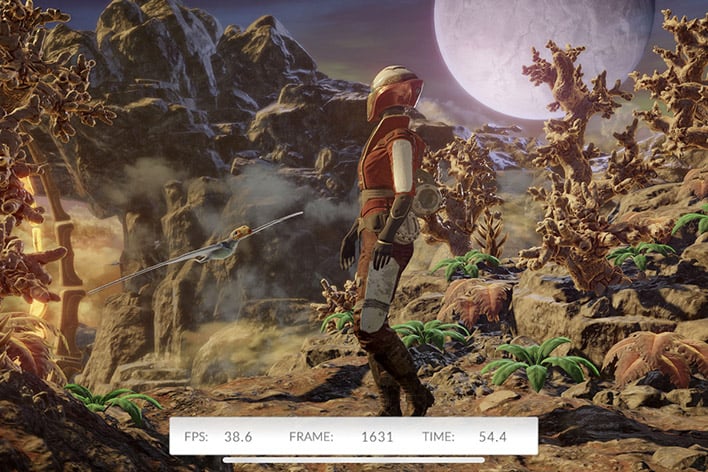
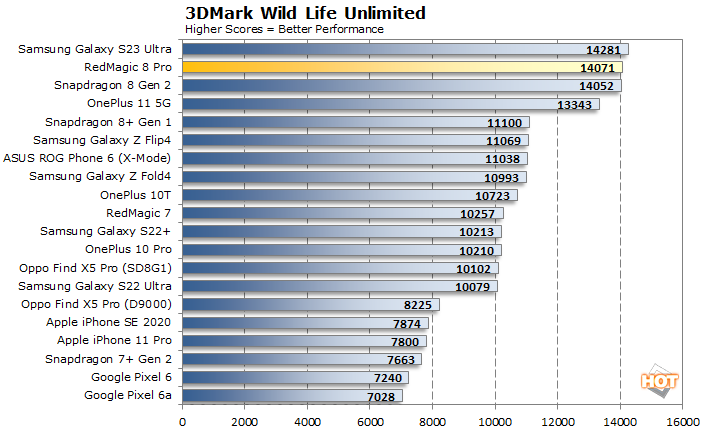
3DMark Wild Life is a significantly more taxing graphics benchmark that employs cutting-edge mobile game engine technologies to deliver impressive visuals -- as you can see in the screen shot above. Here the Snapdragon 8 Gen 2-powered RedMagic 8 Pro delivers a massive improvement in performance versus the fastest Snapdragon 8 Gen 1-equipped devices, and comes out right on the heels of Samsung's Galaxy S23 Ultra, a flagship that's also powered by the Snapdragon 8 Gen 2.
RedMagic 8 Pro Other Features and Battery Life

As you’d expect, the remaining specs are flagship worthy, and include WiFi 7 (802.11be), Bluetooth 5.3 (LE), NFC, and dual-band A-GPS/Galileo/BDS/GLONASS positioning, plus a standard array of sensors. The RedMagic 8 Pro’s optical in-display fingerprint scanner is quick and reliable and also works as a heart rate monitor. While the haptics are pleasant, the vibration motor feels a little weak for a gaming phone.

